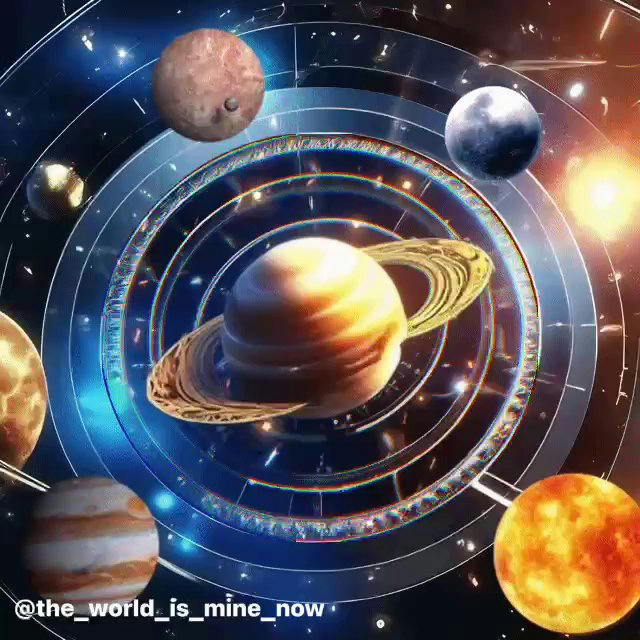
Science4all - Best Scientific Channel
The most interesting scientific discoveries and facts! 🌎 Learn more every day with the best science channel! 🔬 Buy ads: https://telega.io/c/scientific or @manalgner Owner - @the_world_is_mine_now
Show more12 123
Subscribers
+524 hours
+797 days
+430 days
- Subscribers
- Post coverage
- ER - engagement ratio
Data loading in progress...
Subscriber growth rate
Data loading in progress...
🥛Why does water boil while milk escapes? 💧
You can stand by the stove for ages, waiting for the milk to start "rising," but as soon as you step away for a minute, it's sure to run off.
Of course, it's not about some law of mischief, but rather about physics. During boiling, bubbles of vapor form throughout the liquid. Molecules of the liquid evaporate inside them, causing the bubbles to grow. Under the action of the buoyant force, they rise upwards, reach the surface, and then the vapor escapes from them.
When water boils, there's nothing stopping the vapor. But with milk, it's a different story. During its boiling, a thick film forms on the surface, which prevents the vapor, formed during boiling, from escaping. Thus, they displace the milk from the pot, and it escapes. And it happens quite quickly. 🕰️
#discoveries
@scientific
👍 8❤ 2
Solar System Movement ⭐️
The Solar System consists of eight planets that orbit the Sun and move relative to the nearest stars in the direction of the Hercules constellation.
The Solar System moves in the direction of the Hercules constellation because it's the point of solar apex. This means that the Sun moves relative to the stars at a speed of 20 km/s in this direction. It's related to the fact that the Solar System rotates around the center of the Milky Way galaxy and is subject to its gravitational influence.
#discoveries
@scientific
👍 11😱 3🔥 1🤩 1
Aerocycle: 🚁
It's an aircraft resembling a motorcycle with an air propeller. Developed in the 1950s for reconnaissance and troop transport, it didn't gain wide popularity due to the complexity of control and danger to pilots.
#technologies
@scientific
👍 8👏 8👌 3
Do you like our content? 🤔
Please vote for our channel if you have a premium account on Telegram, so we can unlock more features for you and the rest of our subscribers! 🪙
We would be very grateful! 🤗
You can vote multiple times. You probably have several votes.
Vote here - https://t.me/scientific?boost
Science4all - Best Scientific Channel
Boost this channel to help it unlock additional features.
🔥 4
Venus Flytrap: How Carnivorous Plants Eat Their Prey? 🌿🦟
The Venus flytrap grows in the swamps of the eastern coast of the USA and is at risk of extinction.
The plant attracts insects and other small animals with sticky liquid on the surface of its leaves. After capturing its prey, the flytrap's leaf quickly closes, and the plant absorbs it. Interestingly, flytraps can adapt to low levels of nutrients in the soil by obtaining the necessary elements from the captured insects. This allows the plant to survive in conditions unsuitable for most other species.
#discoveries
@scientific
🔥 9👍 6🥴 5😎 4🥰 1🤣 1🤓 1
⭐️Digital Simulation of the Universe Reveals Galaxy Distribution Patterns 🔍
The universe is dotted with galaxies, the distribution of which on large scales forms a filamentary pattern known as the cosmic web. Based on a series of simulations of the visible universe, researchers have begun to study the heterogeneous structure of the universe, considering the distribution of galaxies as a collection of points—much like individual particles that make up material.
This approach allowed them to apply materials science mathematics to assess the universe and gain a better understanding of its fundamental structure.
The research group has shown that on the largest scales (of the order of several hundred megaparsecs), the universe approaches hyper-homogeneity, while on smaller scales (up to 10 megaparsecs), it becomes significantly non-uniform.
#discoveries
@scientific
❤ 9👍 4✍ 2
Stinging Nettle Leaves 🌿🔥
Ever wondered why nettles sting? Their stems and leaves are covered in tiny, almost invisible hairs that are very sharp to the touch. These hairs easily pierce the skin and, when broken, remain embedded in it.
These hairs contain a sap, which includes formic acid, histamine, and vitamin B4. When the hairs come into contact with the skin, the sap seeps into it, causing a burning sensation at the pierced area.
#discoveries
@scientific
🔥 6👍 5❤ 2
Fishing in Slow Motion 🎣
Meet the kingfisher - a small bird of the kingfisher family, which lives in different parts of the world. It is famous for its bright plumage and its ability to catch fish by diving into the water from a height. 🐦🌊
#discoveries
@scientific
❤ 12👍 11🆒 5🤩 2
Transport Protein 🚛
The animation shows how the transport protein kinesin moves along microtubules inside the cell, carrying various cargoes such as organelles or vesicles. It's involved in various processes such as cell division, neurotransmitter transport, and cytoskeleton regulation. 🧬
#discoveries
@scientific
🤯 16👍 5✍ 3😁 2😱 2🤡 1
Spider Silk 🕸️
Did you know that spiders produce silk from their glands? Spider silk possesses amazing characteristics: it's incredibly strong, sticky, antimicrobial, hypoallergenic, and biodegradable.
And did you know that spider silk can withstand loads of up to 300 kilograms per square centimeter? Moreover, spider silk can stretch up to 40% of its original length without losing strength. 🕷️
#discoveries
@scientific
👍 19👾 11❤ 7👌 6✍ 2🤔 2
